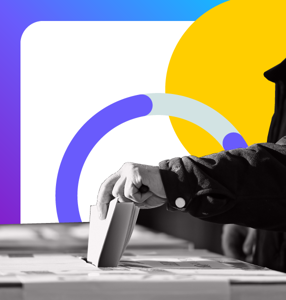Halo by Design Founder, Tam Hussey, explains how to reduce the environmental impact of your digital assets in four steps.
The digital industry is responsible for 3.7% (World Economic Forum) of global emissions. And the impact is set to double by 2025.
Roughly 35%-50% of this figure (Ericsson) relates to how a user engages with a digital experience. This includes energy to power a data centre where digital data is kept, transfer that data from the data centre to a device via a network and display that data on a device.
At Halo by Design I’ve had many conversations with digital and sustainability professionals in which they appear shocked by the notion that their digital estate has a carbon footprint. As a result, I believe that this is not a ‘known’ area of impact.
To test this hypothesis, we at Halo by Design, leveraged Website Carbon to assess the digital carbon footprint of 166 UK B Corp* websites across 26 industries. Our findings upheld our hypothesis:
- B Corp home pages were on average significantly heavier than the average global website page (1.44g CO2e vs 0.8g CO2e)
- 67% of the B Corp home pages (110) scored the lowest two scores on the Website Carbon rating scale (E and F). In fact only 3% (6) came in at best in class (A and A*)
- The home pages were often much heavier than the bottom end of the worst rating (0.847g CO2e). In 47 cases (28%) they were 2x the weight and in 24 cases (14%) over 3x. The worst home page came in at a staggering 11.92g CO2e
- This phenomenon was not just limited to the home page. In 48% of the cases where the home page scored an F all 5+ further pages of the website tested were E and F.
This lack of awareness is a problem as digital experiences are getting heavier and heavier (HTTP archive). It is also an opportunity as it offers an ‘easy’ scope 3 win - especially for companies which get a lot of digital traffic – which has a business case attached (lower hosting costs and improved SEO ratings).
How to get started?
- Assess
Start by assessing all digital assets - website, app, CRM campaigns etc - in terms of carbon footprint.
Don’t forget to look at ‘redundant’ websites or apps that might have been set up for long lost campaigns or employee or partner facing experiences. And make sure you factor in volume e.g. page impressions on a website or volume of CRM messages. From this you can identify priority areas and a 12 – 18 month roadmap.
Hot tip: find someone in the digital or IT team who is passionate about sustainability to help you. This will give them new skills around ‘designing for sustainability’ and help you get the resources you need.
- Plan
Once you have established which assets or areas of assets are the heaviest you need to do a deeper dive to understand where you can get maximum benefit. There are numerous ways to lighten assets e.g. design, UX/UI tweaks, shifting hosting or code type. They could be small or major changes and they can impact different teams (IT, vs marketing vs CRM). Ecograder is a great resource for starting this part of the journey. Then create a plan where you can get maximum impact for minimum effort.
Hot tip: Creatives will be concerned that lighter digital assets will be less attractive / lower conversion rate. Showcase great looking light digital experiences and position this as a learning opportunity (similar to green buildings for architects).
- Activate
Time to get started with activating the plan laid out in step 2. In addition to this you need to set new standards, KPI’s and benchmarks for future digital experiences to make sure your footprint stays small. And police them to ensure you digital estate stays within limits.
Hot tip: you can, if getting a lot of resistance, set a ‘budget’ for digital carbon footprint year 1 and then slowly reduce it over time to give the teams a way to adapt.
- Extend
We believe that digital is a vital and underleveraged tool to help shift consumers, employee or partner behaviour to meet sustainability goals. Through layering nudges into existing digital experiences to shift behaviour incrementally or creating dedicated digital products or services to shift engrained behaviour where more help is needed.
So the extend phase is about how you increase impact through layered sustainability goals into existing customer, employee and partner journeys to shift brand perception and support in behaviour change. Lots more around that and how we can help in lightening your digital carbon footprint on our LinkedIn Company page – Halo by Design or feel free to contact Tam Hussey directly.












